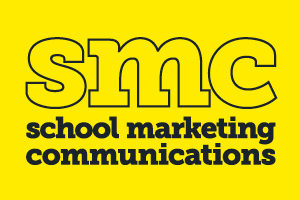When have you tried to sell an idea – one that you know the executives will love – but it fell flat following the presentation?
I was adamant that this year I would pay a visit to the Easter Show. Snapping photos with llamas, devouring various foods on a stick, and visiting the all-important show bag pavilion – is there any better way to spend a day?
I sent a message to my friends accompanied by a photo of a baby llama – “Should we check out the Sydney Royal Easter Show?”
They weren’t convinced.
A few days later, another friend proposed the exact same idea. Instead of animal photos, he sold us on having the best time of our lives, reliving childhood memories. He forwent the text message and spoke to us about it in person. It was clear to everyone just how eager he was, when his words started to roll out one after another, each subsequent syllable increasing in both volume and pitch.
So, we went. Whilst I received over 200 ‘likes’ on my llama photo and had an awesome day at the Show, I did wonder why no one was interested when I originally suggested we go.
You see, having great content will get you nowhere – at least not without the right delivery.
If you’re having trouble getting ‘buy in’ from your audience, here are 5 presentation tips that might help.
1. Figure out what your purpose is.
Your purpose needs to be defined before you even consider the delivery approach.
Are you trying to convince the Principal that a school Twitter account will do wonders in terms of exposure? If so, your delivery needs to be strong and utilise persuasive language.
Reporting back on the marketing efforts of the past year? Your presentation will be structured, use formal language and focus on the outcomes of most interest to the audience.
Or do you have some other purpose? Whatever it may be, outline what you’re trying to achieve and go from there.
2. Each audience has different needs.
How you would speak to an audience composed of early years teachers will differ immensely to how you would present to your managers and senior executives. The delivery again would be different to an external audience of parents and carers.
The type of audience will dictate the level of formality, language used and how in-depth you should go into your topic.
But that’s not it.
You also need to know your audience and what they want, to be able to deliver a presentation they will truly enjoy. If I knew that my friends were more interested in reliving their youth, as opposed to visiting baby animals, I would have had a better chance at selling them on the Easter Show. Remember, your audience wants to know how your idea or product benefits them, so sell them a value proposition rather than features.
3. Prepare a story to tell.
People connect with people. Whilst facts and figures can really support a point, they won’t leave your audience enthralled. A story will concrete an idea and help the audience link it back to their lives, giving your presentation relevance.
It also shows them a part of you. It’s always a good idea to engage with your audience on a more personal level to leave a greater impact. A story is the best way to do it. At the conclusion of your presentation, your audience will have travelled through the journey with you and, as a result, will have established a connection with you.
4. The worst is yet to come.
You’ve memorised your entire presentation and delivered it as close to perfect as possible. Feeling relieved, you deliver your conclusion and get ready to pack up. Then a member of the school council questions your strategy for measuring marketing results, or a prospective parent pipes up demanding to know how your idea is a suitable appropriation of school fees.
What do you do then?
Question time can easily unravel the most confident of presenters. It can either leave your audience thoroughly impressed, or leave them disregarding everything you said up to that point.
Whilst you may not be able to foresee exactly what your audience will ask, you should have an idea of the topics. Research these and prepare possible questions and answers so that on the day, you will look knowledgeable and informed.
5. Engage your audience with your body and voice.
These are two of our most powerful communication tools. Whilst my friend varied the pace, tone and pitch of his voice to convey excitement about a day at the Show, your voice can convey many other emotions too. There are plenty of resources online detailing how you can present better with your body.
These tips will set you on the way to becoming an expert presenter. Remember that you want your audience to establish an emotional connection with you.






